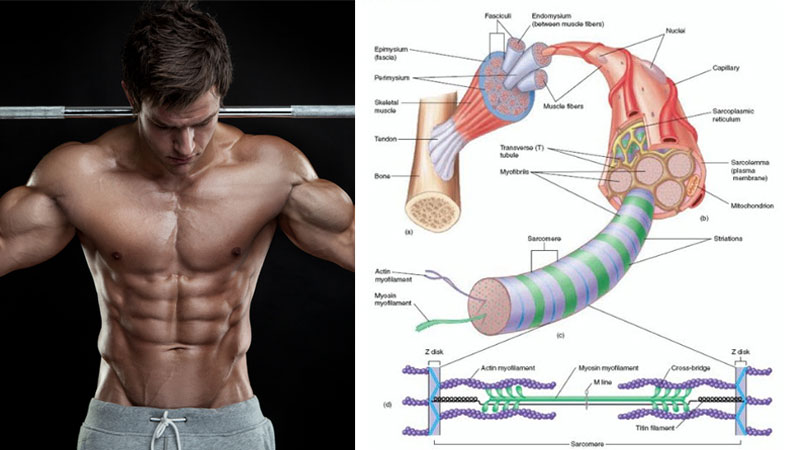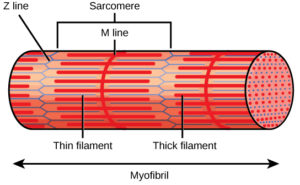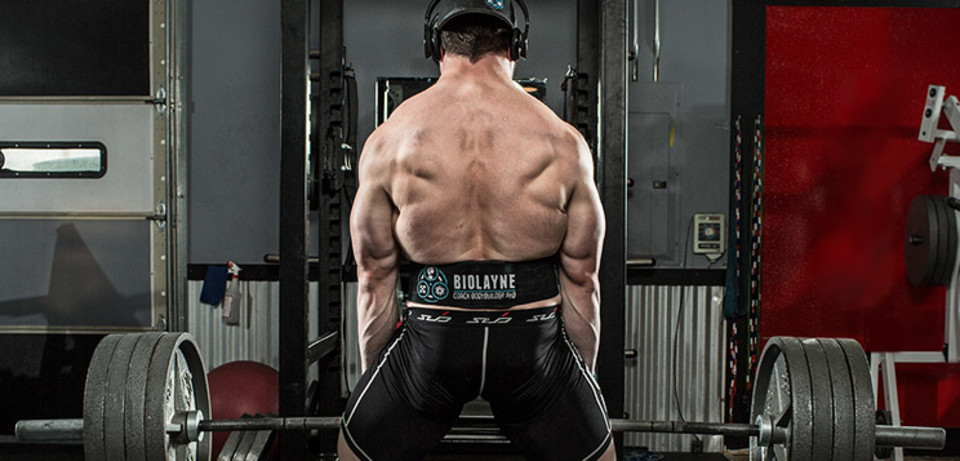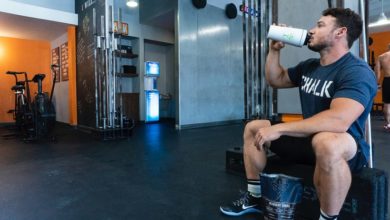
Real bros maximize every inch from their training. If it results in more growth, it’s going in the program. And that means learning about the science of muscle hypertrophy too.
There’s nothing finer than the iron game. Whether it’s the insane, shirt-splitting pumps, the way the bar bends on a max lift or the speed at which the girls panties drop at the sight of your barrel-like chest and sculpted delts; the life of a weightlifter cannot be beaten.
But how much do you really know about the science of muscle hypertrophy?
You might think that the deep recesses of muscle science should be left for Professor Frink-like nerds who struggle to lift their special calculators, let alone double body weight on the bench.
But understanding how muscles grow helps you develop a bullet proof training plan that squeezes every single facet of muscle hypertrophy.
And we’ve pulled all of that information for you right here…
Muscle Hypertrophy Science Explained
Muscle hypertrophy refers to the increase in muscle mass and cross-sectional area from exercise.
Strength training is the type of training most commonly associated with muscle hypertrophy.
The science behind muscle hypertrophy is pretty deep. It involves everything from physics and chemistry, to stress physiology and biology.
Lucky for you though bro, we’ve trimmed the fat and focused on the stuff you need to know.
Inside a muscle fiber

To really understand how muscles grow you’ve got to get out your magnifying glass and go deep into the belly of the muscle.
If you were to strip your muscle right down and take a look at it, you’d see that it has a strip, striated effect.
This is because of the individual muscle fibers that it is made up of.
And if you were to look even closer inside each fiber you’d see that it was made up of two filament strands – a thin one called actin, and a thick one called myosin. These two wrap around each other like rope.
When you contract your muscle (for example during a bicep curl, a press or a squat), these filaments pull against each other using specialized nodules that tug on each other like Velcro.
They bind and create a cross-bridge so that force can be applied.
As this happens, the functional ‘home’ that actin filaments are attached to called sarcomeres shorten. Becuase there are multiple sarcomeres along a muscle fiber, it causes a shortening effect.
This is why your muscle fiber bunches up when you life a weight.
The Mechanisms of Muscle Hypertrophy
You’ve been lifting weights in the iron house and created a stimulus for growth.
You’re confident that the effort, exercise selection and pure energy you put into that workout will result in some mass gains.
So how does muscle hypertrophy actually occur?
Well, one of three ways really, dependent on the exact type of stimulus you smashed your muscles with:
- Mechanical tension
- Metabolic stress
- Muscle damage
Mechanical loading and tension
If you don’t load a muscle and apply tension through it, you won’t make gains.
It’s essential for growth.
Higher relative loads result in better growth. The science of muscle hypertrophy tells us that if you lift heavier weights at the same number of reps, you’ll spark off more growth.
In other words, cranking out 12 reps with a 140 kg bench press stimulates more mass than 6 reps.
This is because you not only activate more muscle fibers (and the neurons that trigger them), but fatigue more too. Mechanical loading also damages the integrity of muscle fibers leading to adaptation.
Metabolic stress
A second mechanism for muscle growth is strength training-related metabolic stress.
It’s at the other end of the scale from tension and loading as its more about the effects of cellular swelling and accumulation of by-products.
When you lift weight you occlude blood flow. This leads to a decrease in venous return and a drop in oxygen level within the target muscle.
The side effect of this is a huge increase in muscle acidity (yep, those skin-splitting pumps that make you feel like you’re burning alive) as well as muscle damage.
But the release of some god damn glorious growth factor hormones and chemicals that trigger muscle growth.

Science of Muscle Hypertrophy: Top Tips for More Mass
Understanding the molecular, mechanical and chemical factors relating to the science of muscle hypertrophy is one thing.
But being able to apply it is another.
This is how to take the nerdy knowledge and use it to make gains bro…
Specificity and specifying the specifics
This is rule number one when it comes to creating muscle mass. A muscle will only adapt to the specific stimulus it is given. For example, you can’t expect to grow huge wheels if all you do is curl in the rack like a bitch.
And you can’t expect to smash a PR on the bench if the majority of your workout is spent sitting on the bike reading some crappy women’s magazine about fashion or some sh*t.
You’ve got to tailor your program to you as an individual if you want to optimize success and avoid the cookie cutter life.
Progressive overload in resistance training
Focusing on lifting taking your body out of its comfort zone and increasing the demands of your workouts provides the stimulus your muscles need to keep adapting and growing.
Recovery is key
While progressive overload is the key to stimulating new muscle, it’s also important to recover too. If you’re constantly smashing your muscles day after day, you’ll accumulate fatigue.
And if you don’t give your muscles chance to recover, you’ll just wear yourself down.
Eventually you’ll end up either overreaching or overtraining and your strength, mass and health will suffer.
Frequency for optimal gains
According to the current research, you should be hitting each muscle 2-3 times per week to stimulate maximum growth.
The days of split routines where you hit a muscle only once per week are long gone.
Volume is the key to growth
Bottom line for volume is that higher volumes means more muscle hypertrophy. More reps with a heavier weight results in more muscle hypertrophy.
You don’t need to time your rest periods
Back in the day we thought that shorter rest times was always optimal for growth. But more and more research shows you can pretty much autoregulate your recovery if you want.
Mechanical tension is maximized through longer rest times (because you can reduce fatigue and lift more weight) and muscle damage is maximized through shorter rest times because it helps to build up metabolic by-products.
So regardless of your recovery time, you’ll still trigger a muscle hypertrophy mechanism presuming you used progressive overload.
Going to failure – use it sparingly
It’s all good grinding out a few extra reps to failure here and there, but repeatedly hitting the point of instantaneous muscle failure takes much longer to recover from.
Muscle failure isn’t something you need to aim for in every rep and every set.
It’ll result in minimal extra gains, but a hell of a risk of overreaching, excessive tiredness and the ass dropping out of your workouts.
A calorie surplus optimizes muscle hypertrophy
If you want to maximize gains you’ve got to eat, eat, eat.
And when you’re full, eat a little more.
You can build muscle as a beginner on lower calories, but as a pro bro you need to give your body as much fuel as possible.
Sufficient protein stimulates protein synthesis
There’s a lot of individual differences at play, but shooting for 1 gram of protein per pound of body weight helps to ramp up muscle protein synthesis.
Sleep is super anabolic
Not only is sleep the best thing ever, it’s also hugely anabolic. Sleep restricted athletes find it harder to pack on mass.
So grab your blanky, settle under your duvet and dream some sweet dreams of gains.
Summary – The Science of Muscle Hypertrophy
The science behind muscle growth, hypertrophy and the cellular mechanisms that underpin it can be pretty complex.
But understanding more about how muscle grows, helps you to plan effective training strategies.
And that means more gains bro.






